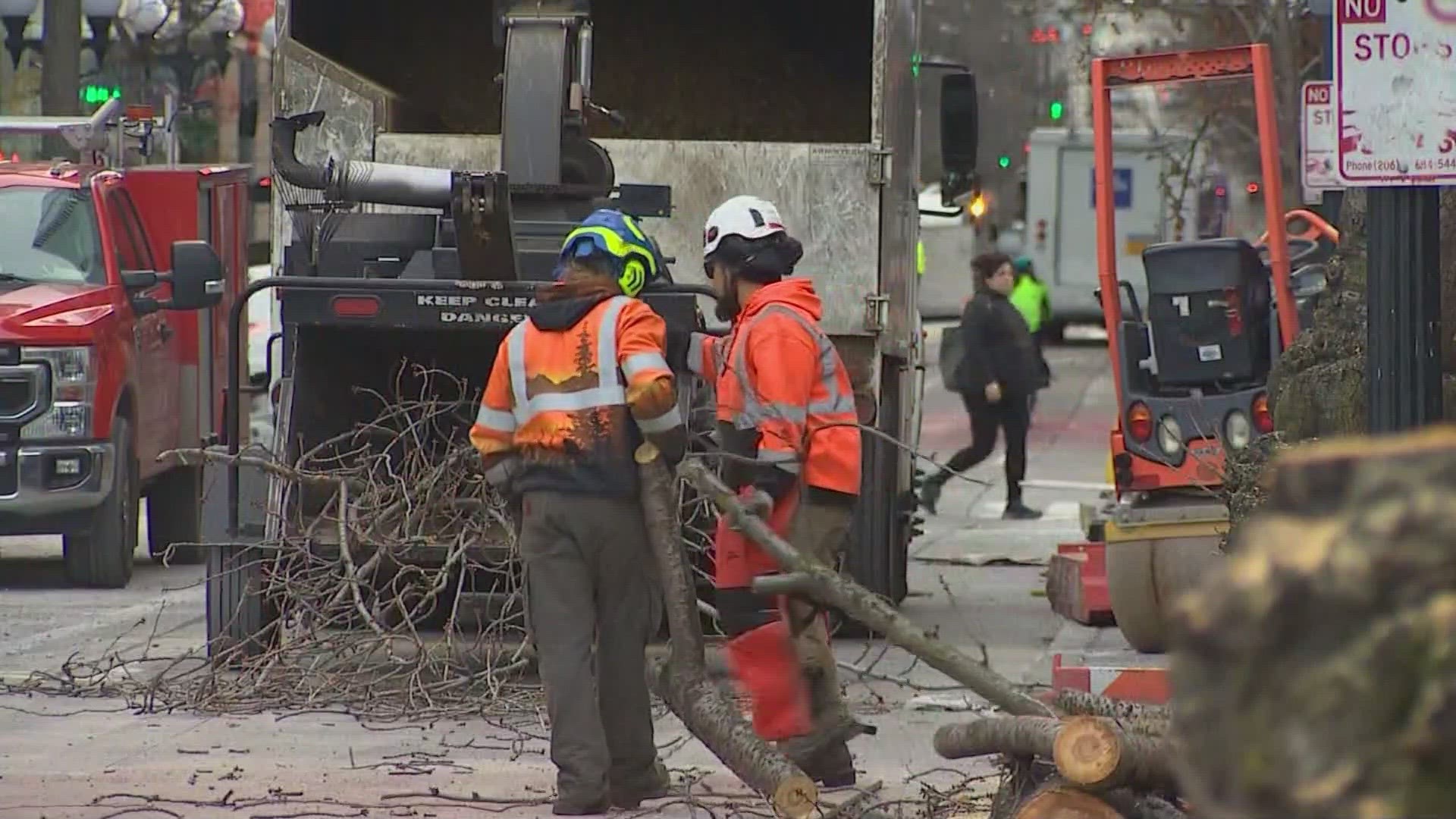SEATTLE — Crews began removing eight decades-old cherry trees near Seattle’s Pike Place Market on Tuesday.
The city plans to replace the trees on Pike Street between First and Second avenues with new cherry trees after community pushback over their removal. Activists said the trees have historical and cultural relevance, bearing witness to the Japanese Americans who worked at the market before World War II and the incarceration of Japanese Americans during the war.
"The entire issue is the recognition of this history and heritage and the fact that the Japanese American community has been here a long time," Kyle Kinoshita of the Seattle Japanese American Citizens League said.
The trees were originally planted in the early 80s. The species is symbolic of the friendship between Japan and the United States and is also a nod to a people whose history is part of Pike Place Market.
"The trees were to commemorate their presence but also to commemorate the fact that they were all incarcerated and their presence simply disappeared," Konishita said.
"Prior to WWII about 70% of the vendors there were Japanese immigrants or Japanese Americans," he continued.
The city said the trees being removed are past their lifespan, which is about 20 to 30 years before they decline in health. Five of the original trees have already died and were removed.
City arborists found the remaining trees are unhealthy and deteriorating. However, Ruth Danner, president of Save the Market Entrance, said “numerous” tree experts told the group the trees were not dying; they needed care.
Under the original plan, the city was going to replace the cherry trees with hybrid elm trees, which were selected because they met street tree standards in form, foliage density and growth rate.
The city postponed their removal last week. After hearing additional feedback from the community, the city shifted gears and will instead plant eight new cherry trees to replace the ones being removed.
"In listening to advocates of preserving existing trees, we weighed the trees’ declining health against a compelling vision of a new and safe corridor for the next 40 years and agreed on the importance of capturing their historical significance," Seattle Mayor Bruce Harrell said in a statement.
The city plans to plant 16 additional cherry blossom trees at a to-be-determined location, such as the new waterfront park.

